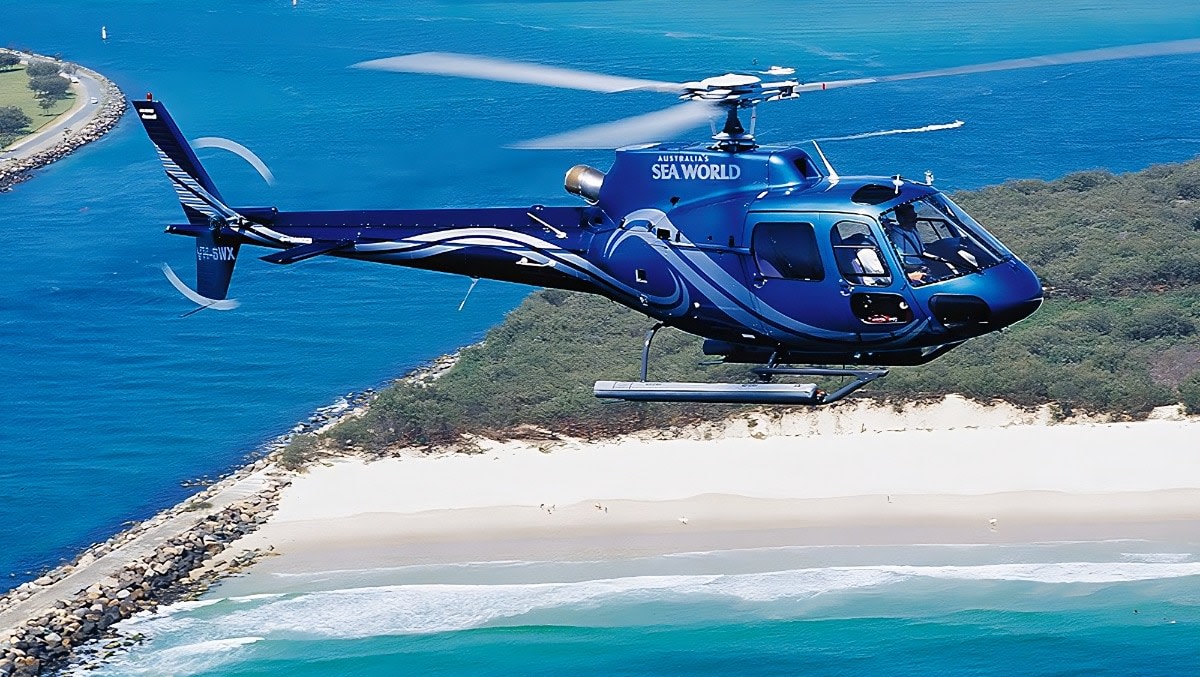The pilot of the Sea World helicopter who died in a mid-air collision over Surfers Paradise last year had used cocaine in the days prior to the accident.
However, an ATSB interim report into the incident concluded that the low concentrations of the drug in Ash Jenkinson’s body suggested it would unlikely to have been an “impairment of his psychomotor skills”.
The investigation, which is still in its early stages, could not rule out whether “post-cocaine exposure effects of the drug, which can include fatigue, depression and inattention, had any effect on the performance of the pilot”.
The incident saw two Sea World Eurocopter EC130s collide mid-air on Main Beach – minutes away from Surfers Paradise – on 2 January 2023. The pilot and three passengers onboard the helicopter taking off died, while three others were seriously injured. The second helicopter, approaching to land, miraculously landed, with all six on board surviving.
Now an update on the formal investigation by the ATSB has revealed that a state pathologist conducted an autopsy and toxicology examination of the pilot of the destroyed helicopter, VH-XKQ.
“The examining forensic pathologist reported that there were no signs of chronic stimulant use,” it said.
“The ATSB engaged a forensic pharmacologist to examine and interpret the results. They stated that: The presence of the benzoylecgonine and methylecgonine indicate the pilot used cocaine within the previous few days (possibly up to about four days prior), but the very low concentrations of these metabolites suggest use was not likely to have been within 24 hours prior to his death and it is unlikely there would have been impairment of his psychomotor skills. Illicit cocaine frequently contains levamisole, which is used as a cutting agent. Based on the blood or urine concentration, it would be impossible to state if withdrawal effects were likely or not.
“Cocaine is an illicit drug and can have harmful effects on pilot performance. Effects include risk-taking, inattentiveness and poor impulse control. The indication of exposure to cocaine is highlighted as the effects of cocaine and post-cocaine exposure increase risk in aviation activities.
“However, although it is unlikely the pilot of XKQ would have had any psychomotor skill impairment on the day of the accident, it is not known whether post-cocaine exposure effects of the drug, which can include fatigue, depression and inattention had any effect on the performance of the pilot.”
ATSB commissioner Angus Mitchell said, “To date, the ATSB has undertaken extensive work to understand and recreate the events of the day in order to identify and examine the context and risk controls that existed at the time.
“The ATSB analysis framework looks at a hierarchy of factors arranged in their relative proximity to an event, and this investigation has so far concentrated on elements closest to the event: individual actions, vehicle/equipment performance, local conditions, and risk controls.”
This work has included interviews with key personnel and witnesses, the examination of both helicopters, maintenance logs, and postmortem information, a review of industry understanding of seat belt fitment, and analysis of ADS-B and radar flight tracking information, CTAF recordings, and video imagery.
“A large amount of the evidence gathered through this work is detailed in today’s interim report, and investigation into and analysis of many of these areas is ongoing,” Mitchell said.
Mitchell noted the evidence includes a toxicology report for the fatally injured pilot, showing a positive result for low levels of cocaine metabolites.
“A forensic pharmacologist engaged by the ATSB has stated that the very low concentrations of these metabolites suggest exposure was not likely to have occurred in the 24 hours prior to the accident, and it is unlikely there would have been impairment of the pilot’s psychomotor skills,” he said.
“It is important to note while this is a substantive and comprehensive interim report, the ATSB is yet to make formal findings as to the contributing factors that lead to this accident as we are continuing our analysis of that evidence.”
Moving forward, Mitchell said the investigation would consider whether any systemic factors contributed to or increased risk in the accident.
“This will include consideration of the design of the operating environment and operating procedures, the onboarding and implementation of aircraft, change management, and the regulatory environment and input,” he explained.
The ATSB’s final report, which will include analysis, findings, and any recommended safety actions, is on track for an anticipated completion in the third quarter of 2024.
“This was a tragic accident, and it is our responsibility to make findings and drive safety actions, which reduce the likelihood of a similar occurrence in the future,” Mitchell said.
The interim report notes several steps already taken in response to the accident.
After reviewing its processes and procedures, Sea World Helicopters has implemented a new “pad boss” traffic advisory role, added air traffic systems to each of its helicopters’ avionic systems, increased communication protocols, and taken steps to make its helicopters more visible.
Separately, the ATSB issued a Safety Advisory Notice in September, targeting aircraft lifejacket manufacturers and national aviation certification authorities.
More to follow…



















